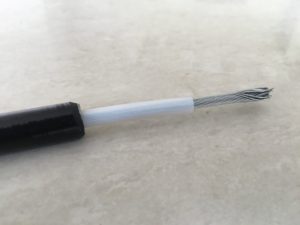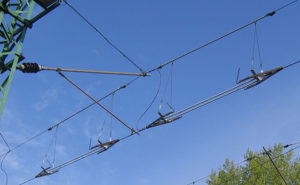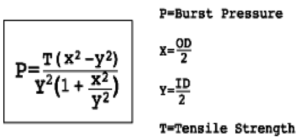For anyone connected to the PTFE industry, the last 18 months have been fraught with anxiety. The shutting down of a few PTFE resin manufacturers in China in early 2017 caused a supply crunch that has yet to ease out, driving prices up as much as 60%.
Many believed that the imbalance between demand and supply of PTFE raw materials would spur a capacity expansion from those manufacturers still operational. However – as we earlier saw in 2011 – resin manufacturers opted instead to maintain capacity and allow prices to increase. From the point of view of companies like Gujarat Fluorochemicals (India) and Shangdong Dongyue (China), this appears to be a sensible strategy. Until early 2017, the price of PTFE resins had been steadily declining due to fierce competition between resin suppliers. The shutting down of Chinese plants would have come as a blessing for these companies, who have since seen their realizations increase.
But while a rational observer may argue that an upward price correction was certainly due in early 2017, pinpointing the “fair” price for PTFE has always been tricky. Not only is the PTFE industry minuscule in comparison to more familiar polymers such as PVC, Polypropylene and Polyethylene, but its irreplaceable properties as an engineering plastic allows resin manufacturers a lot of leeway to test the extent to which higher prices would be accommodated by processors such as ourselves. Considering the price increase has been a worldwide phenomenon, it has not been impossible to convince clients regarding the upward revision of rates. What has been taxing, is the instability. A client may be willing to revise rates once or twice, but when it becomes a monthly affair, one can expect some backlash.
Amid all the uncertainty, it appears processors may have found some solace in the protectionist tendencies of the current US government. When the US announced in October 2017 that they would be reviewing the anti-dumping policy in relation to PTFE resin supplies, no one took much notice. This administration has highlighted multiple instances where the competitiveness of the US economy was threatened by low-cost-countries. We never believed that much attention would be paid to a niche industry like PTFE.
Over the past week, however, tariffs of 69% to 208% were announced on Chinese manufacturers, while Gujarat Fluorochemicals (India’s only manufacturer) was slapped with an 18.5% anti-dumping duty. The resulting impact of this measure is something we would like to extrapolate.
- Demand realignment
The first and most obvious effect of a tariff such as this is to curb demand from the US for Indian and Chinese resins. Globally, North America is said to contribute to about 25% of PTFE demand, with the bulk of this coming from the US.
Our understanding of the price of Chemours resins (the erstwhile DuPont and the company that has lobbied to get the anti-dumping duties imposed) is that they lie between 1.25-1.6 times the price of resins from India. Hence, even with freight and other duties, Indian suppliers may still find some takers in the US market. It should however be noted that given the superior quality of Chemours’ material, processors cannot be expected to choose Indian resins, should the price differential be small.
With regards to China, the pricing is a little more opaque. There are several manufacturers, and each has their own rate contracts with their respective clients. Whether a 208% tariff is warranted or is merely the result of effective lobbying on the part of Chemours, we cannot really tell.
In a twist of undeniable irony, Russian manufacturers have been omitted from this tariff. When Gujarat Fluorochemicals successfully lobbied for anti-dumping duties into India, they made it a point to include both China and Russia in their report. The absence of Russia from the US’ anti-dumping measures means that they are well poised to benefit from the demand shift – assuming the US does not penalize them with any other general trade tariffs.
- Supply realignment
Considering what a large share of the world’s demand the US commands, their focus inward will leave a lot of Indian and Chinese resin manufacturers in the cold. The move is likely to cause the capacities of Asian firms to come in line (if not even exceed) local demand. There is still a significant amount of demand within Asia Pacific – which accounts for more than 50% of the global market. However, the price points are lower and the fact that the US has practically shut its doors mean that competition will drive prices down again.
This may be particularly harsh for Indian resin manufacturers, as Chinese resins – which have been hard to come by locally due to the supply crunch – will undoubtedly flood the market. Interestingly, the anti-dumping duty on Russian resins into India has expired recently, implying that here too, they have a good opportunity to enter the market.
- Value realignment
When India imposed anti-dumping duties on China and Russia back in 2010-2011, the effect was not as beneficial to Indian resin manufacturers as initially assumed. This was because processors shifted their demand from buying raw materials from China to buy semi-finished goods. Traders who were earlier importing resins, now began dealing in rods and sheets.
It is therefore equally likely that in the US too, the market will shift such that semi-finished and finished components get imported, rather than resins. Ultimately, the US has a significant appetite, and this needs to be met one way or another. One cannot imagine a processor in the US agreeing to pay a 200% duty, when they can just as well import finished products with no such penalty.
It should also be noted that while Chemours may certainly want to monopolize the North American market as it once did, it simply may not have the capacity to satisfy the local demand. As a result, shortages will push clients to look further up the value chain for their requirements. In protecting the interest of a few large companies, the US may have just killed of a large portion of its processing industry, which was no doubt dependent on Indian and Chinese resins for staying competitive.



